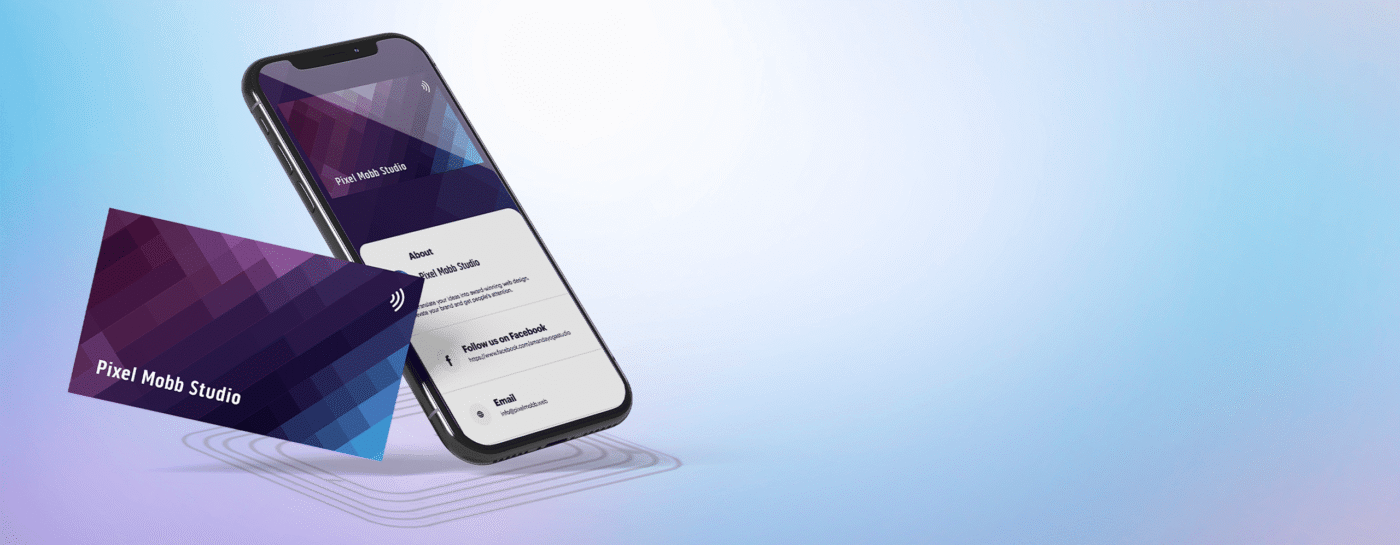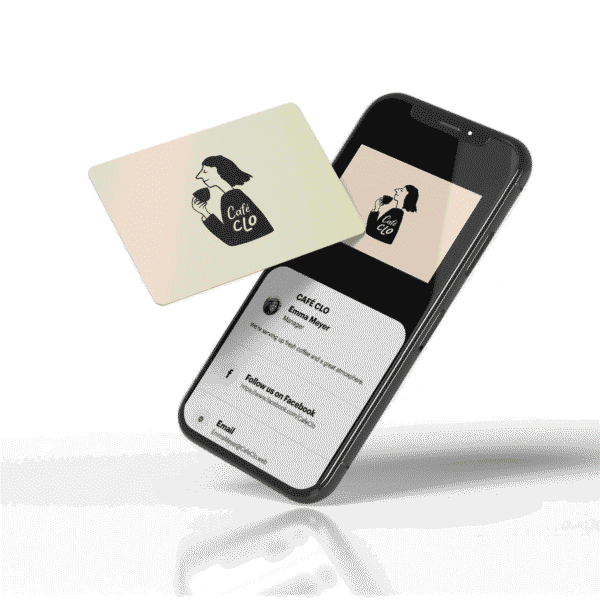The future of business cards is opening new doors for professionals who want to stand out. Thanks to advances in business card technology, that small piece of cardstock is no longer limited to a name and number—it’s becoming an entry point to richer, more memorable connections.
This article explores the trends driving that change, when each one matters and how you can use them to keep your networking sharp and relevant.
- Business cards will remain relevant in 2026, but their role is evolving with digital features that extend beyond print.
- QR code business cards are printed cards with a scannable code. They’re already mainstream and widely used across industries.
- NFC business cards embed a chip for tap-to-connect exchanges—an emerging premium option as costs and awareness improve.
- Virtual business cards are dynamic online profiles and are popular in digital-first fields and gaining broader traction.
- AR business cards overlay interactive content. These are still experimental and mostly suited to early adopters or creative industries.
Are business cards still relevant?
Yes—but they look different.
Search trends around “Why don’t people use business cards anymore?” suggest growing doubts about their place in a digital-first world, often for the same reasons:
- Smartphones make it easy to exchange details in seconds.
- Social platforms act as living resumes.
- Remote work has cut down face-to-face introductions.
For many, a printed card feels like a relic of an analog past.
Yet in practice, business cards continue to carry weight. They remain a quick signal of credibility, professionalism and intent. Handing someone a card still creates a physical moment of exchange that a phone tap can’t replace.
What’s different now is the role technology plays.
Cards increasingly embed QR codes, NFC chips or digital links, turning a static piece of paper into a bridge to online profiles, portfolios or interactive content.
This is why professionals are experimenting with unique business cards that combine bold design with digital touchpoints. The best cards today aren’t trying to compete with apps or platforms—they complement them, offering a tangible reminder that also connects seamlessly to the digital world.
The 4 main business card technology trends
Business card technology is entering a more progressive phase. The common thread across today’s innovations is that the physical card no longer stands alone. Instead, it’s becoming the starting point for a digital connection—bridging the space between a quick handoff and an ongoing relationship.
QR codes: Today’s mainstream business card technology
Traditional cards have always struggled with space. Even the largest business card formats can’t hold every link, title or portfolio detail professionals want to share. QR-enabled cards solve that problem.
A QR code business card is essentially a standard printed card with a scannable code integrated into the design. That simple addition turns the card from a static piece of paper into a direct gateway to your digital presence.
With a quick point of the camera, the code can open a website, save a vCard, launch a portfolio or connect straight to a booking page.

Since nearly every smartphone today has built-in QR scanning through its native camera app, there’s no friction for the recipient—it works instantly, without downloads or extra steps.
“QR codes have become the most practical bridge between print and digital. With one quick scan, your details are saved or your site is open; it’s become second nature for customers.”–Jennifer Collins, Sr. Product Manager (Business Cards & Stationery) at VistaPrint
When to act: Adopt now. This business card technology is already mainstream, affordable and widely understood by customers.
Add QR codes to link to your site, LinkedIn or booking page.
NFC: Emerging premium business card technology
While QR cards extend the functionality of paper, NFC business cards feel like an upgrade altogether. These are still physical cards, but instead of a code to scan, they include a tiny chip. When tapped against a smartphone, the card automatically opens the link you’ve programmed—no app, no scanning step.
This creates a smooth, almost futuristic exchange.
In practice, it’s the difference between someone fumbling with their camera and a one-second “tap to connect” moment. Right now, NFC is most common in tech-driven industries or high-value networking spaces where first impressions matter.
“NFC adds a modern, seamless tap-to-connect moment. It turns a handoff into an instant contact exchange in seconds.”–Jennifer Collins, Sr. Product Manager (Business Cards & Stationery) at VistaPrint
When to act: Consider within the next 12–24 months. Costs are falling and awareness is rising, but this business card technology is still positioned as a premium option.
Virtual business cards and dynamic profiles: Future technology
Virtual business cards take the idea of a digital handoff further. Instead of being printed with a code or chip, they live primarily online and act as a flexible profile that can be shared across platforms. They don’t replace physical cards, but they work alongside them—your printed card makes the introduction, while the digital version ensures your details stay current.
These profiles can be updated in real time and linked directly to LinkedIn, CRMs or other business apps. That way, a contact who scanned your card months ago still has access to the right phone number, job title or website without you having to reprint anything.
For fast-changing industries, this ability to keep information accurate and connected is what makes virtual cards increasingly attractive.
“The future isn’t physical versus digital—it’s both. A printed card provides the professional handoff, while a virtual profile ensures your details stay up to date and can integrate with tools like LinkedIn or CRMs.”–Jennifer Collins, Sr. Product Manager (Business Cards & Stationery) at VistaPrint
When to act: Already useful in digital-first industries; expect 2–3 years until it becomes more standard across all sectors.
AR: Business card technology to keep an eye on
Finally, there’s augmented reality—the most experimental of today’s business card technology trends. AR business cards overlay digital experiences on top of the printed surface, creating something closer to an interactive demo than a traditional handoff.
With the help of an AR-enabled app, scanning the card can trigger a 3D product preview, a short video introduction or animated content that goes far beyond static design.
As Jennifer Collins, Sr. Product Manager (Business Cards & Stationery) at VistaPrint, explains, “AR feels too early for most businesses,” but it’s a development worth tracking for those who want to stay ahead of the curve.
When to act: Only for early adopters or creative fields; expect 3–6 years before this becomes mainstream.
So, what is replacing the business card?
Nothing. The business card isn’t disappearing. Instead, it’s adapting.
The most effective approach today is a hybrid one: a physical card as the opener, paired with a digital layer that extends the conversation.
Different industries are moving at different speeds. More traditional sectors lean on QR cards as the safe, accessible option. Digital-first companies are quicker to adopt NFC or virtual profiles that sync with the tools they already use. The result is variation, not replacement.
For ideas tailored to your industry, take a look at our guide to business card design ideas.
The future of business cards
The future of business cards isn’t replacement—it’s evolution. QR codes, NFC chips, dynamic profiles and even AR show that the card is no longer just a slip of paper but a tool that connects the physical and digital sides of networking.
For small and midsize businesses, this shift is practical and flexible. Some industries will stick to QR cards because they’re simple and familiar. Others, especially in digital-first sectors, are already leaning into NFC and virtual profiles. How to design a business card becomes a decision shaped by how far you want to lean into new technology, and how bold you want your first impression to be.
But whether you need a QR-enabled card today or inspiration for something more unique tomorrow, VistaPrint is here as a partner in that process.








